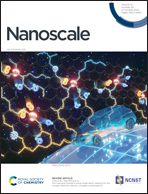Angiopep-2-decorated titanium–alloy core–shell magnetic nanoparticles for nanotheranostics and medical imaging
Abstract
The poor permeability of therapeutic agents across the blood–brain barrier and blood-tumor barrier is a significant barrier in glioma treatment. Low-density lipoprotein receptor-related protein (LRP-1) recognises a dual-targeting ligand, angiopep-2, which is overexpressed in the BBB and gliomas. Here, we have synthesized Ti@FeAu core–shell nanoparticles conjugated with angiopep-2 (Ti@FeAu–Ang nanoparticles) to target glioma cells and treat brain cancer via hyperthermia produced by a magnetic field. Our results confirmed that Ti@FeAu core–shell nanoparticles were superparamagnetic, improved the negative contrast effect on glioma, and exhibited a temperature elevation of 12° C upon magnetic stimulation, which implies potential applications in magnetic resonance imaging (MRI) and hyperthermia-based cancer therapy. Angiopep-2-decorated nanoparticles exhibited higher cellular uptake by C6 glioma cells than by L929 fibroblasts, demonstrating selective glioma targeting and improved cytotoxicity up to 85% owing to hyperthermia produced by a magnetic field. The in vivo findings demonstrated that intravenous injection of Ti@FeAu–Ang nanoparticles exhibited a 10-fold decrement in tumor volume compared to the control group. Furthermore, immunohistochemical analysis of Ti@FeAu–Ang nanoparticles showed that coagulative necrosis of tumor tissues and preliminary safety analysis highlighted no toxicity to the haematological system, after Ti@FeAu–Ang nanoparticle-induced hyperthermia treatment.



 Please wait while we load your content...
Please wait while we load your content...